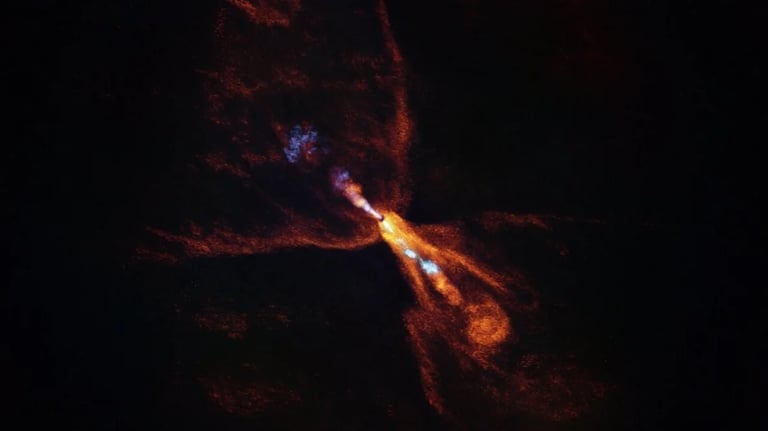Webb Telescope Unveils Earliest Stages of Planet Formation Around Young Star HOPS-315
July 16, 2025
The star's gas disk contains a gap that allows clearer observation of the inner regions, revealing processes that might be common in planetary system formation across the universe.
Unlike previous studies focused on older or more mature disks, this observation captures the earliest stages of planet formation, offering a rare glimpse into the initial building blocks of planetary systems.
The collaboration between the James Webb Space Telescope and ALMA was crucial in studying HOPS-315, demonstrating the power of combined observational technology to explore early planet formation.
Astronomers have observed the earliest stages of rocky planet formation around the young star HOPS-315, providing unprecedented insights into how planetary systems like our own begin.
Although CAIs were not directly detected, the mineral ratios and their locations suggest conditions suitable for their formation existed shortly after the star's birth.
The high-temperature conditions necessary for CAI formation appear to occur around one astronomical unit from HOPS-315, similar to the early solar nebula.
Stars like HOPS-315 form from collapsing interstellar gas and dust, creating a protoplanetary disk where planets begin to take shape, with the process occurring within the first 100,000 years of the star's life.
This discovery suggests that the formation of solid, rocky materials is a common phenomenon in early planetary development, hinting that Earth-like planets could be widespread.
Using the James Webb Space Telescope, researchers detected warm silicon monoxide and rich silicate minerals in the star's protoplanetary disk, marking the first definitive evidence of ongoing planet formation.
Melissa McClure from Leiden Observatory led the international team behind this discovery, emphasizing its significance for understanding the initial steps of planet development.
Further investigations into disks like HOPS-315 are encouraged, as questions remain about the formation and distribution of calcium-aluminum-rich inclusions (CAIs), which are key indicators of early planet formation.
Published in the journal Nature, this research marks a significant advancement in understanding how planetary systems develop and highlights the importance of next-generation telescopes in exploring these processes.
Summary based on 15 sources
Get a daily email with more World News stories
Sources

Forbes • Jul 16, 2025
New Solar System Seen Forming In Night Sky — What To Know
Nature • Jul 16, 2025
The origin of the oldest solid objects in the Solar System
Nature • Jul 16, 2025
Birth of a solar system caught ‘on camera’ for first time
Yahoo News • Jul 16, 2025
Astronomers capture the birth of planets around a baby sun outside our solar system